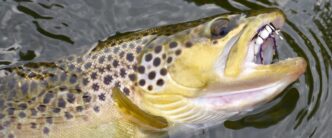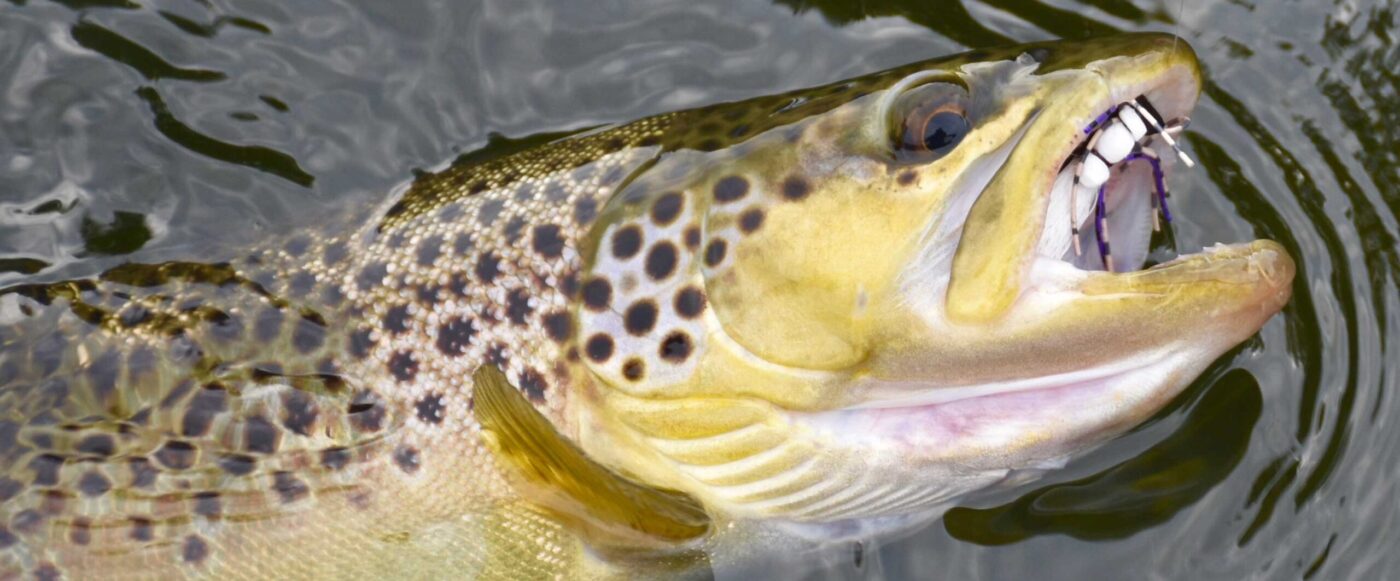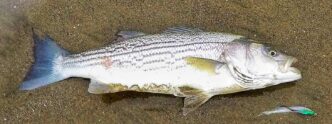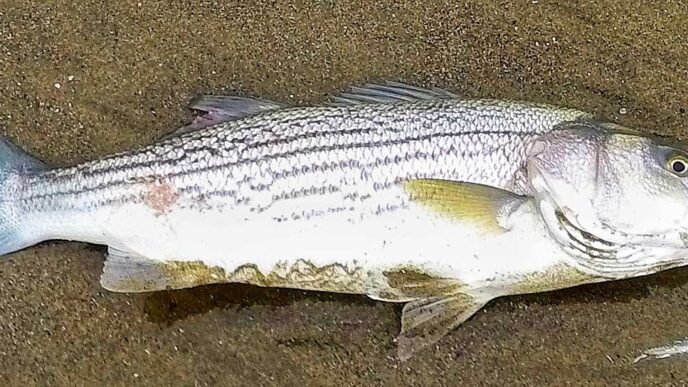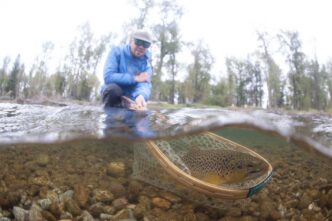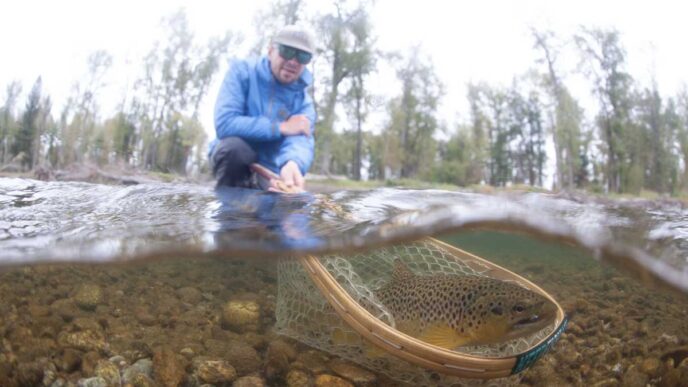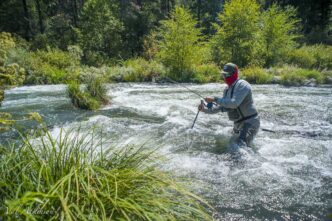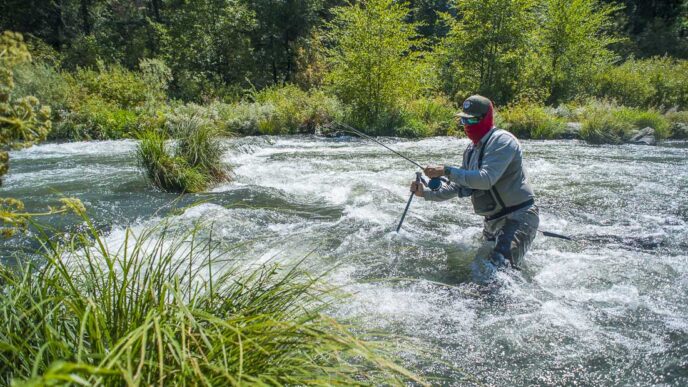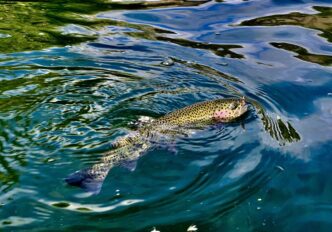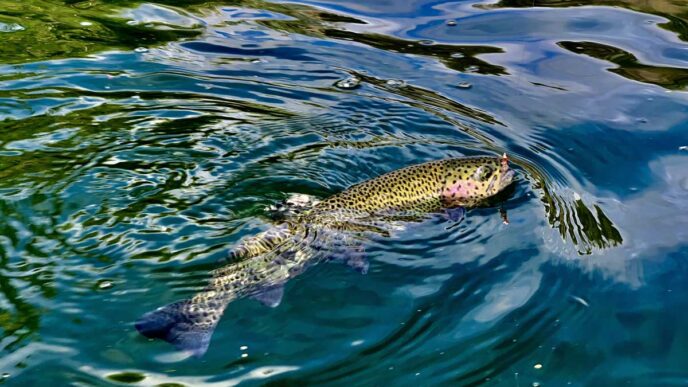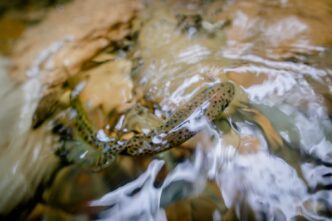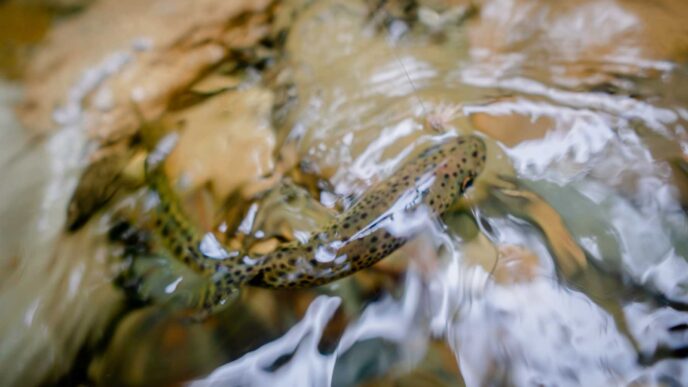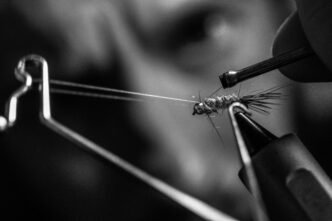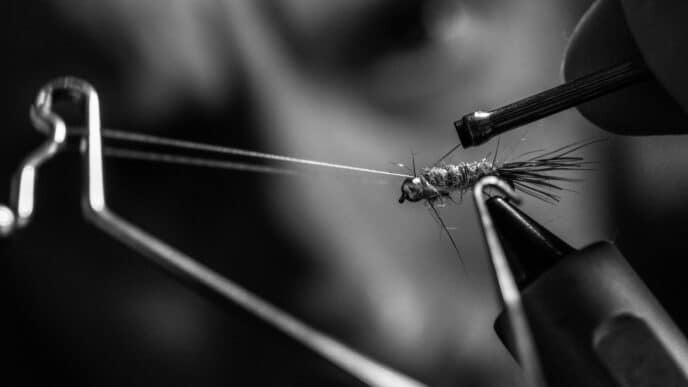Recently, I had the privilege of guiding a small group of fly fishers at Manzanita Lake. These four gentlemen were special—they were all Veterans and part of a Project Healing Waters group from the San Francisco Bay Area.
On the first day, we focused on rigging and getting acquainted with the lake. The next morning, we planned to fish using either stripping rods or rods rigged with indicators. As I launched my drift boat from the small gravel ramp, I felt something crawling on my neck. When I grabbed it and opened my hand, I saw a flying carpenter ant. Moments later, more ants were crawling on me and the boat.
As I launched, two of the Veterans jumped in, and we set off. One of them was rigged with a long-tapered leader and tied on one of my ant patterns, while the other fished with an indicator and WD40 midges beneath. The Veteran with the ant hooked and landed a nice brown. Soon, fish were rising all around us. I quickly re-rigged the second Veteran with an ant, and it was game on! By the afternoon, I had all the Veterans rigged with an ant, and we had an epic day.
LESSON LEARNED: ALWAYS CARRY TERRESTRIALS
I learned the importance of carrying terrestrials in my fly box at a young age. One summer, my dad took my brother Lincoln and me to a lake in the middle of nowhere. I mean, like 20 miles up an old four-wheel-drive road, no one else in sight nowhere. I was 12 or 13 years old and didn’t want to be camping. I had a new girlfriend, and my mind was more on adolescent romance than on camping or fishing. But I had my fly rod and fly box with me, and the lake was right there. So I went fishing.
That evening, a ladybug fall occurred. They were everywhere, and the fish loved them. I rifled through my fly box to find anything resembling a ladybug. In the corner of my old Perrine fly box, I found a royal red humpy—half chewed up, but it would have to do. I tied it on, and by the end of the night, it was shredded. I caught more fish than I could count. That experience cemented a lesson: Always carry terrestrials.
UNDERSTANDING TERRESTRIALS
Terrestrials are land-based insects that become available to fish when blown onto the water. Unlike mayflies and caddisflies that hatch in the water, terrestrials such as beetles, ants, and grasshoppers enter the water by accident in what’s known as a “fall.” These events can fuel a fishery, as terrestrials provide a high-protein food source for fish over extended periods.

ANTS
Ants are a staple in my lake fly boxes. I always carry the flying carpenter ant pattern, but I’ve recently started stocking a variety of ant patterns to better match the fall. One of my favorites is the RIO Deer Hair Ant in size 12 because it is easy to see and sits perfectly in the water. This was the ant I handed out to the Veterans at Manzanita Lake.
Fishing ant imitations on a lake is simple. I use a 9-foot monofilament leader tapered to 5X, add two feet of 5X monofilament tippet to make my 11-foot tapered leader, and tie on the RIO Deer Hair Ant. I usually pre-treat it with floatant and reapply as needed. Most of the time during an ant fall, the fish are everywhere, eating everything that hits the water. Unlike traditional dry-fly presentations, where a delicate landing is preferred, you want the ant to hit the water with a splash. This mimics their natural, high-velocity entry, which causes a large ripple, signaling fish to feed.

Falls are typically found along the wind line—the zone where calm water meets ripples, waves, and sometimes, whitecaps. That is where you want to fish with terrestrials. Wind carries terrestrials from trees to the water, creating a feeding frenzy along this transition zone.
When fishing wind lines, I always position my boat or personal watercraft perpendicular to the line. I like to cast so my fly hits right on the waves and drifts with them. The fish will position themselves with their heads facing the wind, or like in a river or creek, upstream. The fish can see the ants, beetles, and everything else coming to them. All they have to do is eat, expending very little energy.
The takes are vigorous, and the trout usually hook themselves. On the Manzanita trip, I advised the Veteran fly fishers to hook the fish before they try to eat the fly. I stressed that I would rather lose a fish due to a slow hookset than have the fish swallow the fly so far down its throat that removing it might cause fatal injury. A quick lift of the rod is all it takes when the fish eats the fly. As my dad always said, “It’s a clean hookup!!”
TERRESTRIALS ON CREEKS AND RIVERS
I have primarily encountered ant falls on stillwater, but they can also be found on creeks and rivers. One afternoon on Putah Creek, I ran into an ant fall after flows bumped up from 150 cfs to around 400 cfs. I started fishing the creek like I usually do—with a nymph rig with small mayfly nymphs and midges. I was fishing Access 4 and had the whole little run to myself. Just as I was about to quit, I saw a fish’s snout come out of the water and take something on the surface. I sat in the shade and watched. More fish began rising, aggressively feeding along the current seam. I couldn’t see a hatch—no mayflies, no midges, no caddis—nothing.
I waded back to the north side bank, towards the parking lot. Approximately 10 or 12 red ants were on willow leaves, size 14 or 16. They were everywhere. I sat down and searched my Putah Creek fly box for anything I could use, alter, or hope would work. I had nothing. The only dry I had was a small Gray’s X-May Emerger. I was disappointed. I sat there for a bit and watched the fish rising to the surface to feast on the ants. Frustrated, I returned to my truck.
While storing my gear in the truck, I spotted my small creek fly box in my gear bag. I opened it up and, to my delight, there were two Royal Red Humpies. I quickly changed the nymph rig into a 9-foot 5X leader and tied on one of the humpies. Let’s just say it was a fantastic two hours on the creek. Since then, I always carry a brown hard body ant and a Royal Red Humpy, both size 16, in my Putah Creek fly box.
GRASSHOPPERS: A SUMMERTIME FEAST
Terrestrials are not just found on lakes—they play a big role in river fisheries too. In the summer of 2023, I was reminded of this on the Lower Sacramento River. I was drifting with clients, Tom and Helen, when we stumbled onto a feeding frenzy. Trout were gorging on grasshoppers right off the bank. Thanksgiving was in August! Luckily, I carry hoppers in my river fly boxes and had the right fly at the time.

We stumbled on this feast accidentally when we stopped for a restroom break on one of the many islands. As we were about to head back down the river, I noticed fish feasting very close to shore. I couldn’t see what they were eating initially, but then a gust of wind would appear and boom, trout snouts would appear. I re-rigged both fly fishers to a hopper-dropper rig. On the first drift—doubles—both hookups eat the hopper. Second, third, fourth, and fifth drift-throughs, doubles—all eating the hopper. It was epic!
THE “BUMP METHOD”
When fishing terrestrials, position yourself where you can cast downstream with the wind coming from your casting arm. The terrestrials are getting blown from the wind side. I like to fish with dry flies downstream to the fish, using the bump method. With this method, as the fly drifts downstream it’s the first thing the fish sees—not the leader or fly line.
The “bump method,” also known as “stack mending” or the “Fall River Twitch” is very effective for fishing terrestrials in moving water. I first learned it on the Fall River, where it’s often used from an anchored boat targeting rising trout downstream.
For the wading angler, it is highly effective as well. The method involves peeling line off the reel and letting it release from the rod tip as it drifts downstream. The mechanics start with the reel being higher than the rod’s tip, about a foot above the water’s surface. With the reel higher, gravity aids in dispensing the line from the tip as the rod tip is whipped up and down in two-foot increments. When done correctly, you’ll see waves of the line being released from the tip of the rod during the upward whip movement. The line can either be pulled from the reel and coiled below you or peeled off the reel as the drift is in action, moving downstream. Keep feeding the line to the intended target until the fly first enters the trout’s cone-of-vision. This method can be used for all types of dry flies, including terrestrials on moving water, and the length of this presentation can be a great distance, over 50 feet.
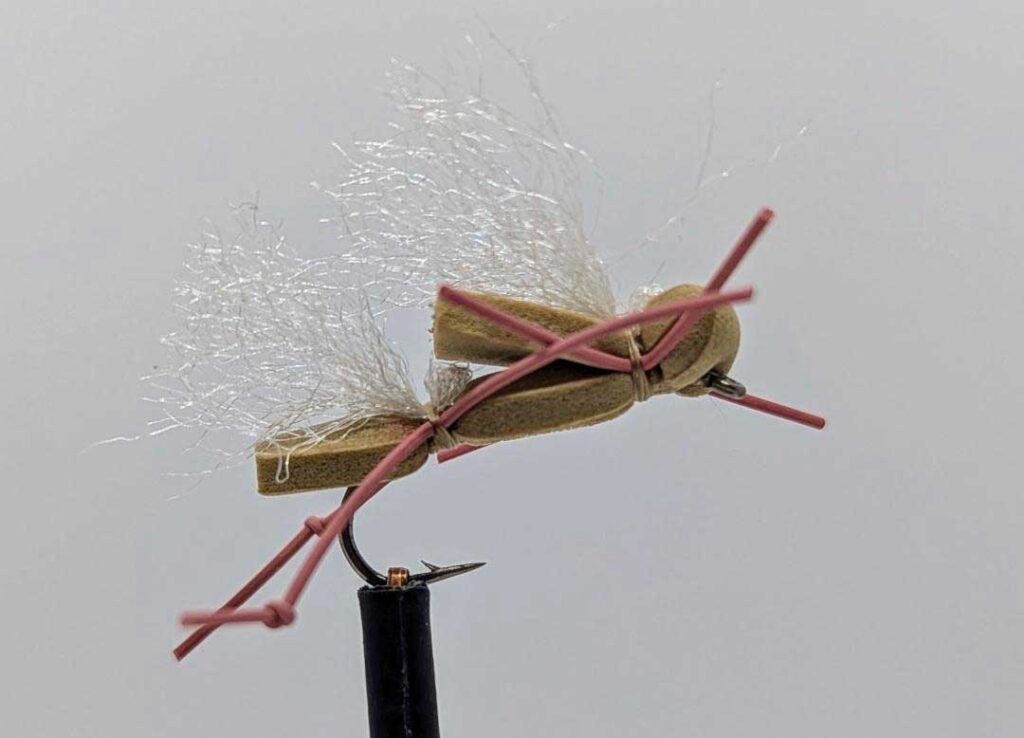
RIGS
Zack Thurman, master fly tyer and manager of The Fly Shop in Redding, prefers a hopper-dropper setup even when fishing ants or beetles. His go-to terrestrials include the Hopper Grande (tan, size 8-10), Powell’s Ant RP (black, size 14), and the Hi-Vis Beetle (size 14). His rig consists of a 7.5-foot 4X monofilament tapered leader to the hopper, ant, or beetle, followed by three feet of 5X monofilament tippet to a Peaches & Cream Nymph (size 18).
Friend and master tyer Tim Fox, of Mr. Fox’s Outfitters takes a different approach. He prefers fishing a Chubby Chernobyl tan UV (size 6) hopper solo, without a dropper. However, when he fishes an ant or beetle pattern, he likes to fish it with another hatch-specific dry fly, for instance, the hex hatch at Lake Almanor. Tim will fish a hex dry fly with an ant or beetle about 18 inches away. His double dry-fly rig is a 9-foot 2X tapered monofilament leader to his first fly if the fly is large (hopper or hex); a 9-foot 4X tapered monofilament leader if the fly is small like a caddis. From the bend of the first fly, he attaches the second dry fly with an 18-24-inch piece of 5X monofilament tippet. During a recent hex hatch at Butt Valley Reservoir, I tried this rig tying on a Hexagenia dry fly (Lance’s Hex Dun) and then my favorite deer hair ant as the trailer. I found the trout preferred the ant over the Hexagenia dry fly.
For a different hopper-dropper approach, I consulted Yuba River guides Brian Clemens of Nor Cal Fly Guides and Joe Garza of JAG Fly Fishing. They directed me to Tom Page of Reel Anglers Fly Shop, sharing that they use Tom’s secret hopper-dropper setup. I reached out to Tom, who was gracious enough to share it and allow me to include it in this article. Tom attaches a six-foot Airflow floating poly leader to the end of his weight-forward floating fly line. He then attaches a three-foot 3X monofilament tippet and ties it to his hopper. Tom’s hopper is his Page’s Chubby Hopper. From the hook bend of the hopper, he ties on three feet of 5X tippet and then ties on his Tommy P’s Mangy Prince Nymph for a dropper. After he explained his leader set-up, I gave it a try. I set it up with a Hexagenia dry fly—my Lance’s Hex Dun—as the hopper and a blood midge—Thurman’s Cut Bait Blood Midge—as the dropper. It cast exceptionally well, and I caught fish with it. The percentage of fish taking the hopper to the dropper was evenly split.
Moral of the story, always carry terrestrials—you will need them!


